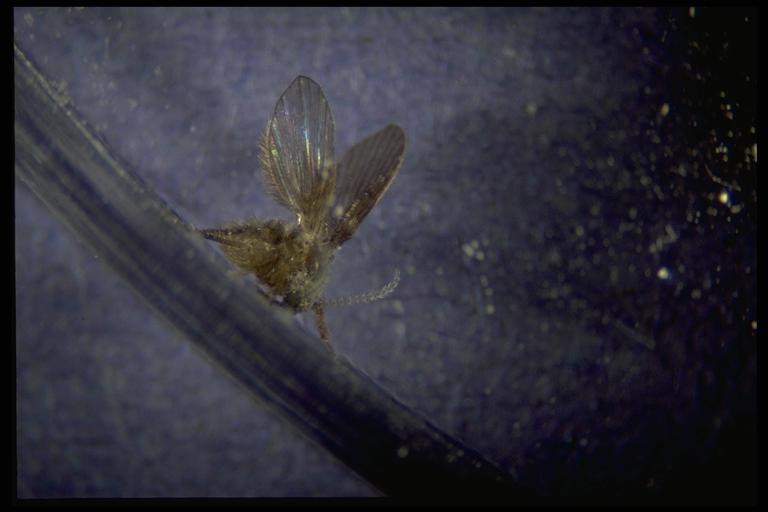
A drain fly or moth fly, (Diptera: Psychodidae). Photo by Drees.
Common Name: Drain fly or moth fly
Scientific Name: Varies
Order: Diptera
Description: Adults are small and very hairy, with a pair of pointed wings. They resemble small moths because they hold their wings roof-like over the body when at rest. They are weak fliers and appear to hop or jump.
Life Cycle: Eggs, laid by females hatch into pale-colored larvae. Following a feeding period, larvae pupate and soon emerge as adult flies. Adults live only 3 to 4 days without food, but they can survive for weeks if nectar or other liquid carbo-hydrate food sources are available.
Habitat and Food Source(s): Larvae have chewing mouthparts. Drain flies are common around sink drains, sewage treatment facilities, storm drains, dung and rotten vegetation. Larvae are aquatic or semi-aquatic, feeding on bacteria, fungi, algae and other microorganisms present in decaying organic matter. They often feed in the liquid or slime layers which develop around debris in drains, sewage treatment beds and standing water. However, when food is scarce they may become cannibalistic. Larvae are capable of surviving temperature extremes and habitats low in oxygen.
Pest Status: A nuisance when numerous in and around homes and structures in the close vicinity of breeding habitats; larvae considered beneficial, an essential part of the cycle that breaks down waste into water soluble compounds; medically harmless.
Management: Not generally considered a pest.
For additional information, contact your local Texas A&M AgriLife Extension Service agent or search for other state Extension offices.
Literature: Drees & Owens 1982.